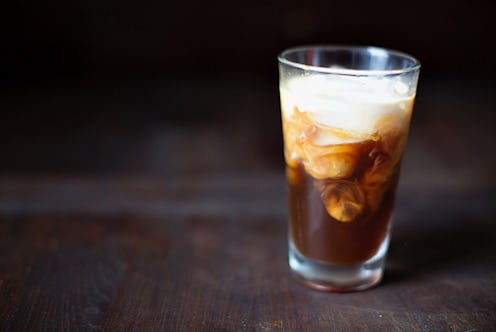Life
How To Make Your Own Cold-Brewed Coffee Like A Pro

Inspired by conversations on the Food52 Hotline, we're sharing tips and tricks that make navigating of our kitchens easier and more fun. Today: We're re-running one of our summertime favorites, and showing you how to make cold brew coffee, which really is the easiest coffee method out there — as simple as one, two, steep.
Cold-brewed coffee is like iced coffee’s cooler sibling. They’re made of the same stuff, but one’s a little more “in” — and one’s well-known and loved, but a bit passé. Dare we say it: Cold brew is the summer beverage — caffeinated and cold, two adjectives you and your money can get behind.
The main difference between cold brew and iced coffee involves temperature. That is, cold brew is brewed cold and never heated, while iced coffee is normal coffee that’s then cooled down. For more detail on how this affects taste, concentration, and all that coffee jazz, see below.
Here are a few things that transformed cold-brew from alternative iced coffee to ubiquitous coffee shop darling (and why we’re all about it):
- Lower acidity level: The grounds aren’t subjected to the intense heat of boiling water, making the chemical profile of the final brew different than that of conventionally brewed or drip coffee. Lower acidity creates a smoother cup that’s mellow on the stomach. Similarly, rapidly cooling hot coffee yields a slightly bitter taste. Cold brew’s lower acidity means it naturally tastes sweeter.
- Watery problems, no more: Ever poured hot coffee over ice? Then you’re familiar with diluted coffee. And watery coffee is sad. Cold brew puts the dilution in your hands. Since it’s already cold or at room temperature, the addition of ice or added water is entirely optional.
- A more caffeinated cup: While caffeine is more soluble and extracts more easily at higher temperatures, cold brew’s high bean-to-water ratio and longer brew time give it more buzz. Add milk or cream to temper intensity, if you like.
While iced coffee’s expensive, cold brew’s even pricier when you're buying it at coffee shops. It’s an issue, though, with an easy solution: Make cold brew at home — in three steps. It can be done in any sort of large container, French press, or even a Mason jar (there’s also specific cold-brewing contraptions, if this is going to be your new morning drink). Really, if it holds coffee and water, you can cold brew in it. We’re focusing on the container and French press methods, because those are the contraptions we (and likely you) use most and will readily have around. Here’s why cold-brewing might just be the easiest coffee method out there:
Grind
The ratio of coffee grounds to water is subjective and depends on personal taste. A good place to start is to grind 3/4 cup beans for 4 cups of cold water — the size of a 32-ounce French press. You can double — with 1.5 cups beans for 8 cups water — or even triple the quantities depending on the size of your container. Next, grind the beans very coarsely. We mean it. A smaller grind will result in cloudy coffee.
More: How to clean a coffee grinder.
Soak and wait (and wait, and wait…)
Put the coffee in your container, which can be plastic, glass, or ceramic, and doesn’t need to have a lid. The container should be deep enough to hold the coffee and water and light enough that you can pick the whole thing up to strain. For a French press, pour the coffee into the bottom of the canister. For both a container or a French press, gradually add the water. Stir gently, making sure all the coffee grounds are moistened.
If using a large container, cover the top with cheesecloth. For a French press, place the top on (but don’t press down on the plunger). Let stand at room temperature for at least 12 hours. Don’t rush this. The long steep time is important for proper extraction.
Press
If you’re using a container, take the cheesecloth from the top of the container and use it to line a fine mesh sieve set over a large pitcher (or bowl or whatever else you’d like to store your cold brew in). Pour the coffee through the sieve, waiting a minute or two until the coffee’s filtered out, and discard solids and cheesecloth.
For the French press, simply press down on the plunger to move grounds to the bottom. Pour.
That’s it! You have cold brew. The concentrate will keep for up to two weeks covered and chilled in the fridge. Add ice, milk, or your other favorite coffee things and enjoy.
Photos by James Ransom. Supporting reporting by Hollis Miller.